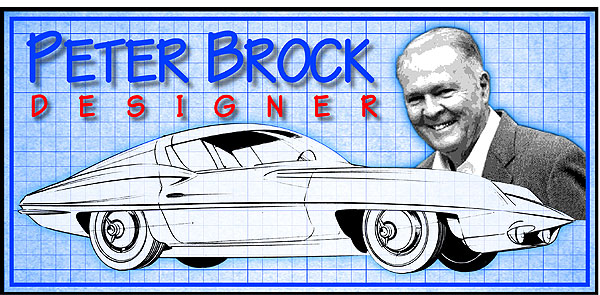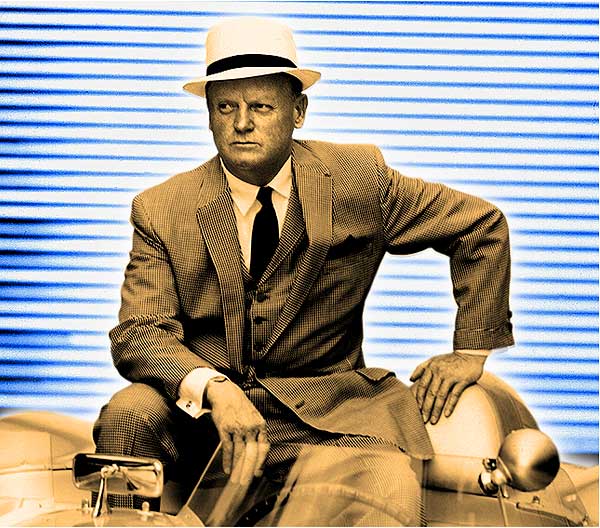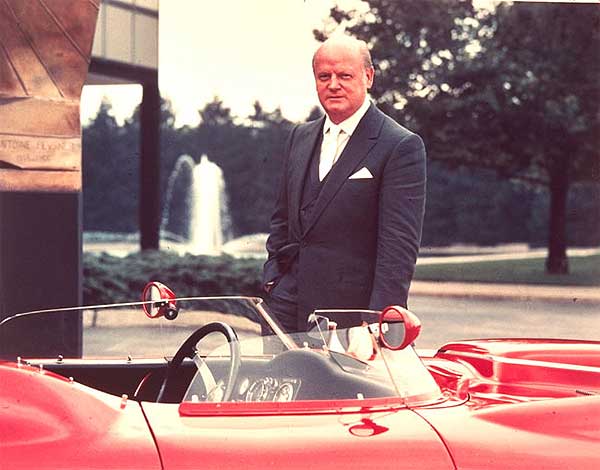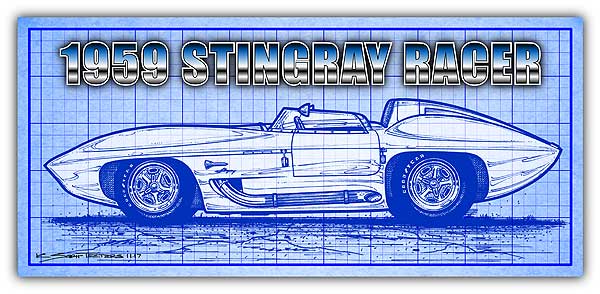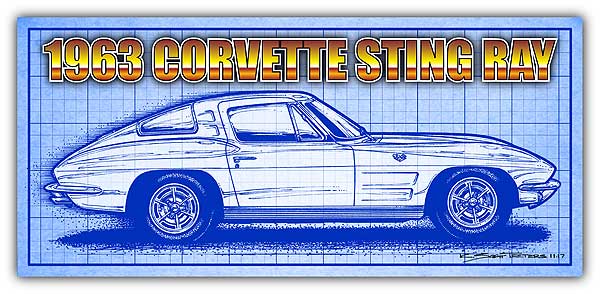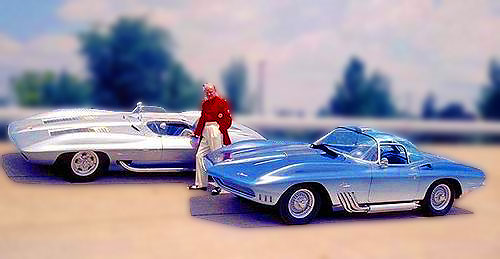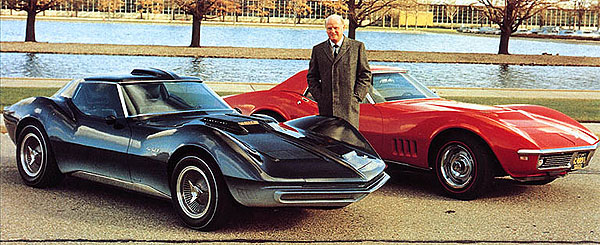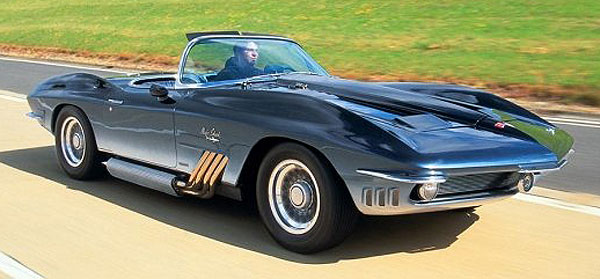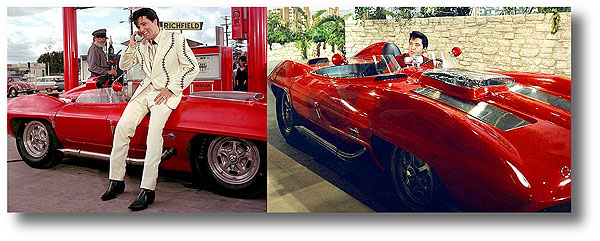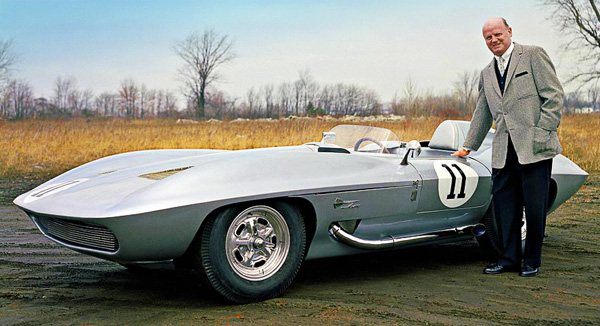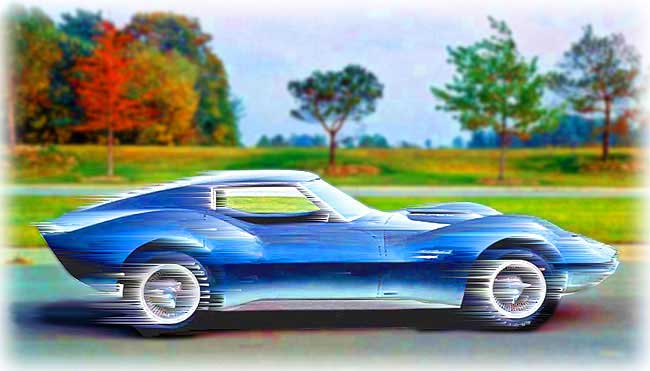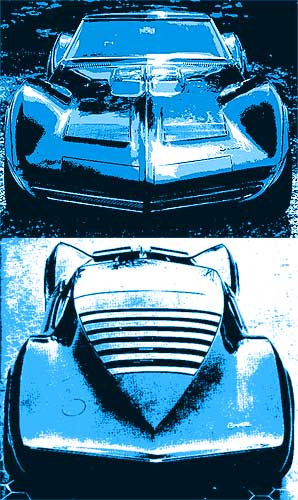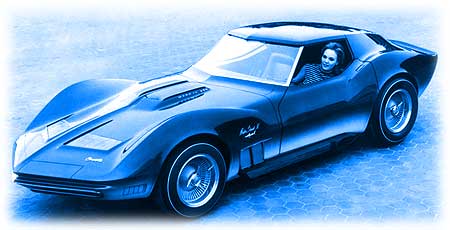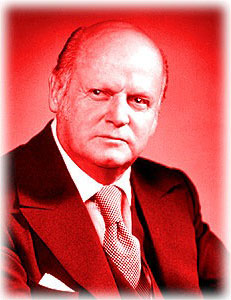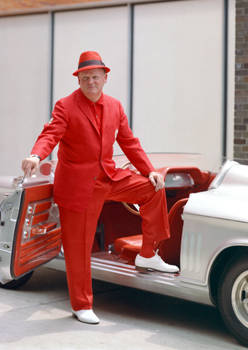Peter Brock: The Man Who Penned the Sting Ray
Dateline: 2-28-19 – Images: GM Archives; Graphics & by K. Scott Teeters
Of the six men in our “Corvette’s Founding Fathers” series, Peter Brock had the shortest career at GM, but his contribution was enormous. Like all of the Founding Fathers, Brock had “gasoline in his veins” and was cut from the same cloth as Larry Shinoda; post-WW-II southern California, the birthplace of modern hot rodding.
Brock got the car bug at the age of 12 when he spotted a 1949 MG TC with a broken engine in back of the garage where he had his first after-school job. Brock studied the lines and mechanicals of the MG TD and at 15 bought the car. With help from his car pals, he got the car running. Brock’s second car was a 1946 Ford that he made into a fast, award-winning hot rod. Whereas Shinoda’s “Chopsticks Special” hot rods were scrappy-looking drag racers, Brock’s Hot Rod Ford was a sleek beauty that was quick at the drags and had class-wins at the Oakland Roadster Show in 1954 and 1956
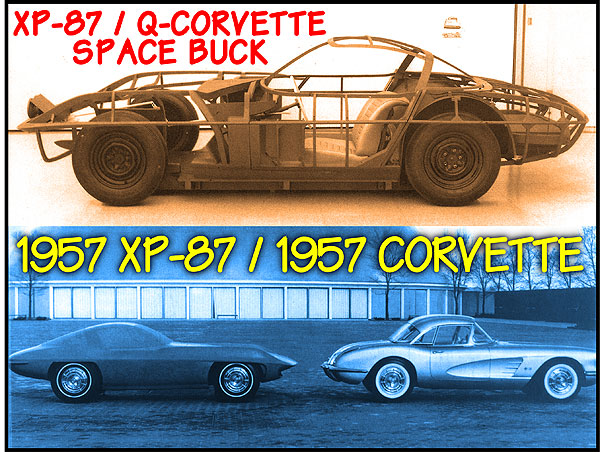
.While pit crewing for some older car pals that were racing, Brock decided that he wanted to race, but Brock observed that racing was an expensive enterprise. He determined that he’d better first learn a trade. And since automotive design was his second passion, he’d have to go to Art Center College of Design.
Brock’s approach to getting into the school was stunning; he walked in and told the receptionist that he wanted to attend. The lady asked about his portfolio and Brock had to admit he didn’t know what a portfolio was. After she explained, Brock went to his car, created a series of drawings on blue-lined school paper, came back in after a few hours and said, “Here’s my portfolio.” He made his case that after a month, if his work wasn’t approved, he’d leave.
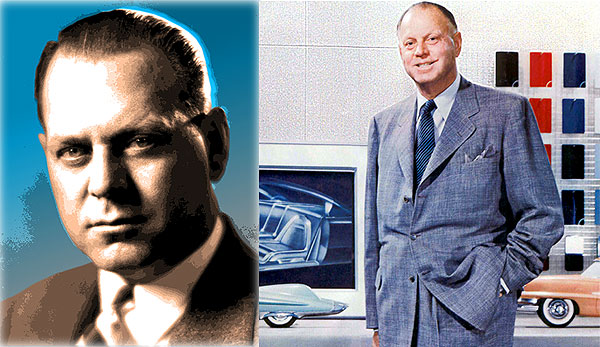
Brock didn’t see much value in life drawing, light and shadow, and graphics classes. But the “Transportation 101” class was exactly what he was looking for. With great teachers, classmates, and his enthusiasm, Brock was ready for his next big break. His only problem was that he ran out of money! GM Designer Chuck Jordan was then working as a headhunter scouting new talent. When Brock explained his situation to Jordan, he received a round-trip ticket to Detroit for an interview with GM, and later a job offer. Brock later said, “GM was like going to the best grad school. The best education a car designer could hope for.” At 19 Brock was the youngest designer ever hired at GM.
Brock couldn’t have been happier and would often work after hours. One evening Design Director Harley Earl entered the design studio and struck up a conversation with Brock. Earl asked Brock what he thought of GM’s design direction. Surprisingly, Brock told Earl that GM needed to look into the small car market because the Europeans was making inroads and GM needed a small “student’s car” for young people that couldn’t afford a new bigger car. Earl was intrigued. After several more evening conversations with Brock, Earl informed Brock that he was starting the XP-79 Cadet project and that Brock was to lead the design effort, under the direction of a studio boss! What an astonishing opportunity!
Brock went through the entire design process, from sketches, and line drawings, to a full-size mockup that looked like a small European GT. Earl loved the concept and expanded it to include a delivery vehicle. But when Earl showed the $1,000 Cadet concept at Styling’s 1958 line review meeting, there was dead silence. GM president Harlow Curtice said, “We don’t build small cars at GM!” The project was dead, but it did plant a seed that soon became the Corvair.
Harley Earl was about to retire, and his Olds Golden Rocket-like C2 Corvette concept was going nowhere. Around the same time the 1957 AMA Racing Ban killed all racing activity. But 46-year-old Bill Mitchell was about to take over as VP of Design upon Earl’s retirement, and had his own ideas of what the next Corvette should look like. The main Chevrolet design studio was where official GM advanced production designs were created, but Mitchell also set up a special Studio X where he could do his own private design work. After returning from the 1957 Turin Auto Show, Mitchell gave his Studio X team photos of cars that most impressed him; the streamliner record cars from Abarth and Stanguellini, and the Alfa Romeo “Disco Volante” coupe. He liked the bulging fenders and sharp horizontal crease line, and instructed his team to sketch some ideas based on the photos.
A few days later, Mitchell came back to review his team’s progress. He carefully looked at all the drawings and stopped at one and said, “Whose work is this?” Brock raised his hand and Mitchell said, “Nice! I’d like everyone to take a closer look here because this approach to the theme has some real possibilities. Your goal is to expand on this. Let’s see how we can approve.” Studio head Bob Veryzer might have been peeved because he put Brock’s drawing away! But during the next review, Mitchell asked, “Where’s that sketch I approved?” Veryzer put the Brock sketch back up and Mitchell said, “Yes, that’s the one! This is what I want!” That’s how Brock got in the lead design team.
Brock refined his design and explored removable roof panels, unique door hinges, and a roll bar built into the B-pillar. Several weeks into the project, Mitchell asked Brock if he knew anything about Earl and Duntov’s 1957 SS Racer. Brock explained that he and several of his designer friends drove around the clock to Sebring to see the car race. Mitchell was impressed and then explained that he had acquired the SS mule chassis and intended to use it as a successor to Earl’s car, and work on it as an “advanced concept”. Thus the XP-87 was born.
Based on Brock’s refined sketches, a work-order was released for a 1/5th scale model to be built. Because of UAW regulations, all of the clay work would have to be done only by the modelers and Brock couldn’t even touch the model. What Brock learned was that the modelers were outstanding, fast professionals, and totally open to his sugestions; they were there to serve the designers. Once again, Brock was learning from the best.
Around the same time, Ed Cole was pushing his Q-Chevrolet line concept that would have all 1960 Chevrolet cars, including the Corvette, use a transaxle for better weight distribution, and to eliminate the interior transmission hump. Duntov’s engineering layout included an all-aluminum fuel injected engine, a four-speed transaxle, four-wheel independent suspension, a platform chassis, and inboard brakes. A full-size space buck was built and Brock and the team translated the 1/5th scale mode into a full-size clay model. Brock commented that with the space buck, everything fell into place. Unfortunately, the entire Q-Chevrolet concept collapsed due to cost and was diluted down to a less expensive car more suitable for production.
Peter Brock explains the Stingray Racer.
But Mitchell still was hooked on Brock’s design. The XP-87 project morphed into Mitchell’s Stingray Racer and then into the 1963 Corvette project, both driven by the capable skills of co-designers Larry Shinoda, Chuck Pohlmann, Tony Lapine, and Gene Garfinkle. Because of the AMA Racing Ban, Brock saw no opportunity to be involved with anything connected to racing, so he left GM on good terms, and went back to California to begin his racing career.
Post GM Brock raced an ex-Le Mans team Cooper and later upgraded to a Lotus II Series 2, coming in runner-up two seasons in a row to veteran racer Frank Monise. Through providence, Brock was Carroll Shelby’s first employee and set up the Carroll Shelby School of High Performance Driving, ran Shelby’s Goodyear Racing Tire operation, helped develop the very first Shelby Cobra. Brock also created the Cobra Daytona Coupe to take on the Ferrari, won an FIA GT World Championship, and World Speed Records at Bonneville.
In 1965 Brock started Brock Racing Enterprises and raced Hinos, Datsuns, and even a NASCAR Mercury until 1972. After Brock decided to end his racing career, he got into hang gliding. In recent years Brock has worked as an automotive photo journalist and authored a book about the Daytona Cobra Coupes, and “Corvette Sting Ray: Genesis of an American Icon. In 2017 Brock was initiated into the National Corvette Museum’s Hall of Fame in 2017. Brock Brock’s single sketch was the beginning of the Sting Ray. – Scott
Here are the links to the previous five parts of the “Corvette’s Founding Fathers” series…
Pt 1 – Harley Earl
Pt 2 – Ed Cole
Pt 3 – Bill Mitchell
Pt 4 – Zora Arkus-Duntov
Pt 5 – Larry Shinoda

